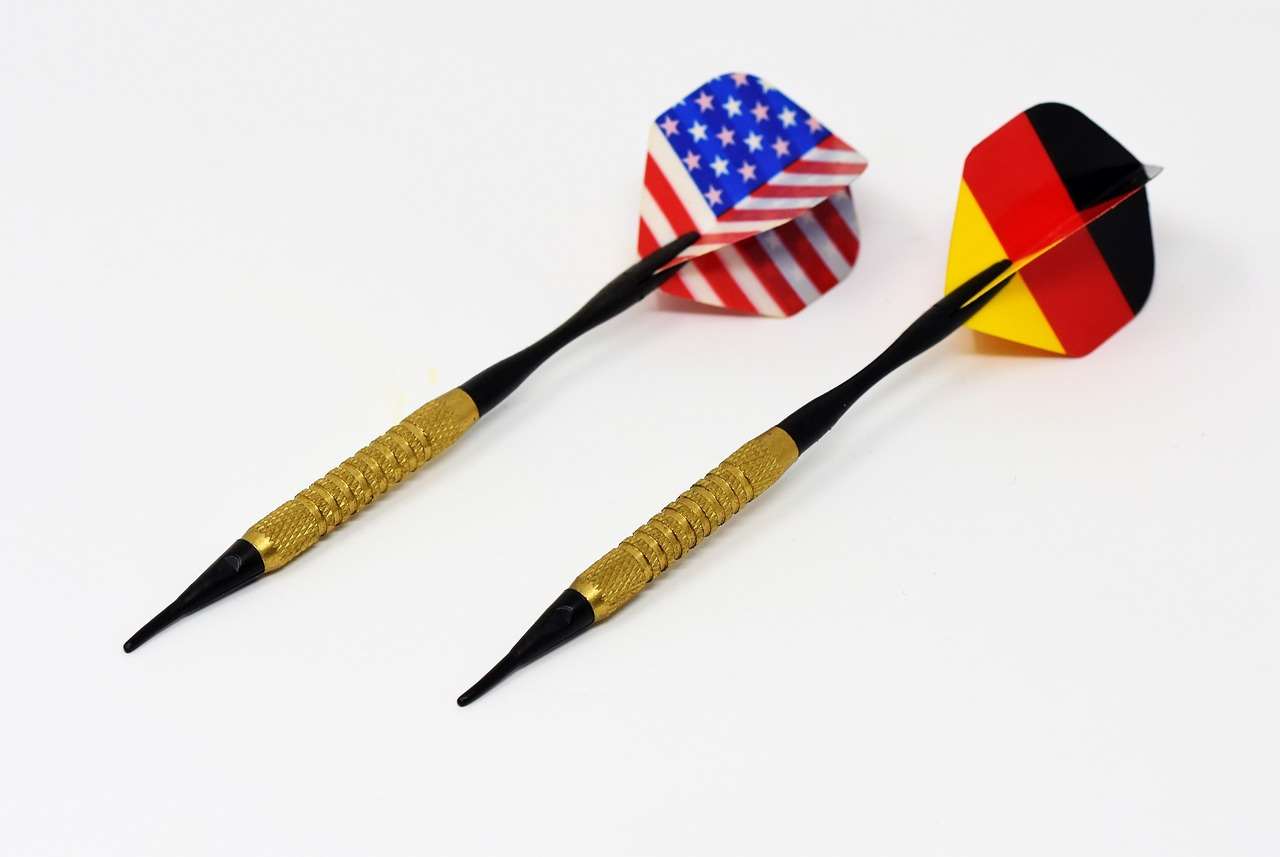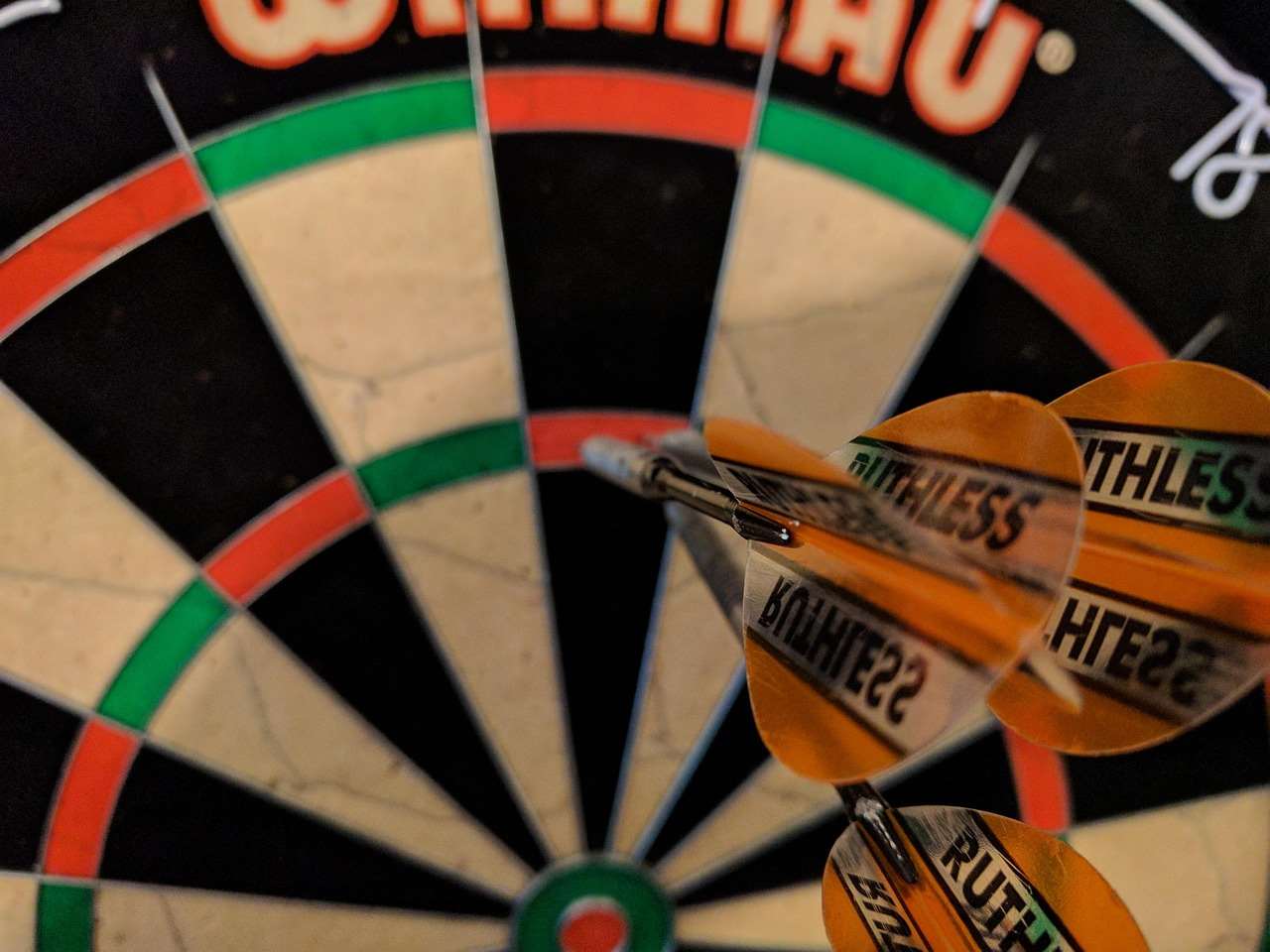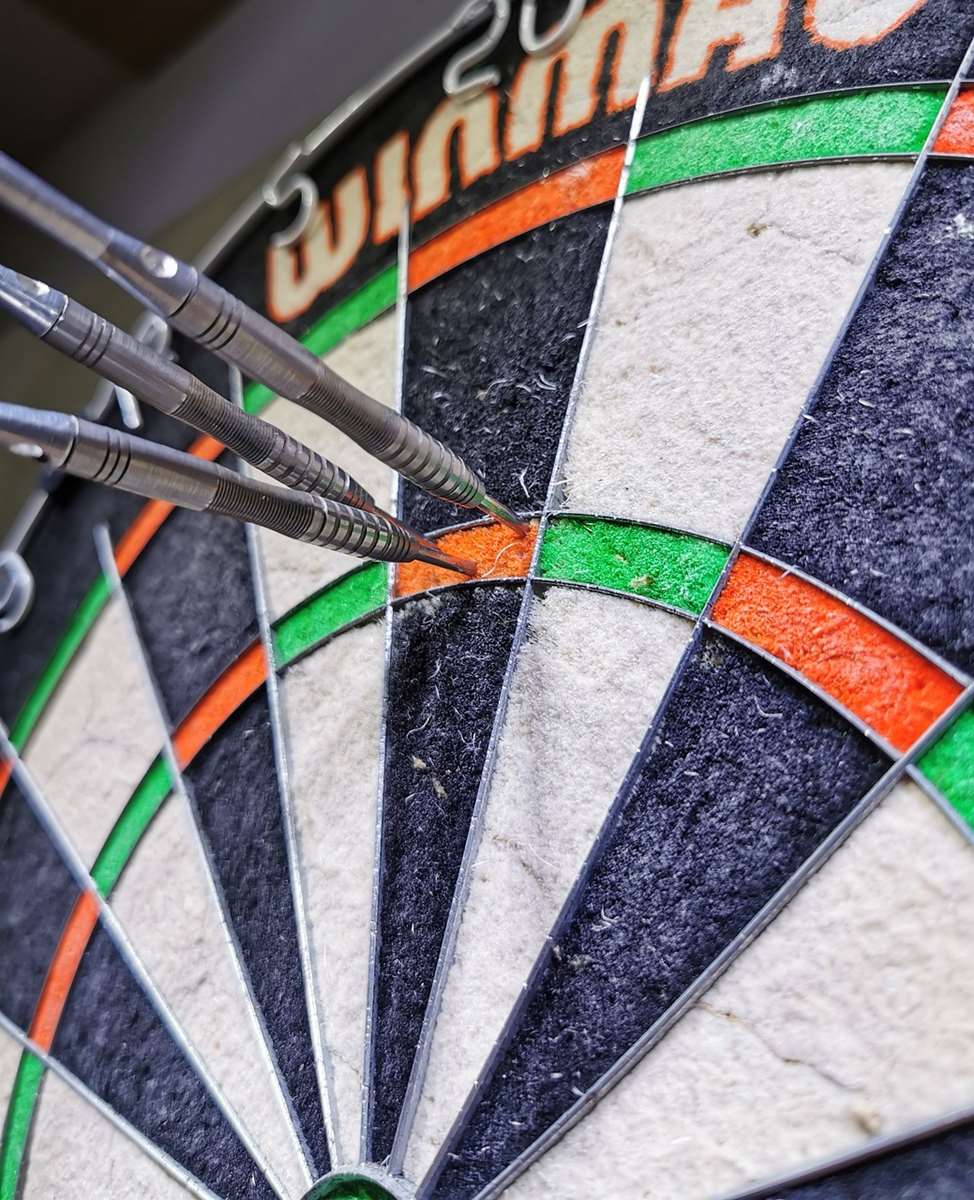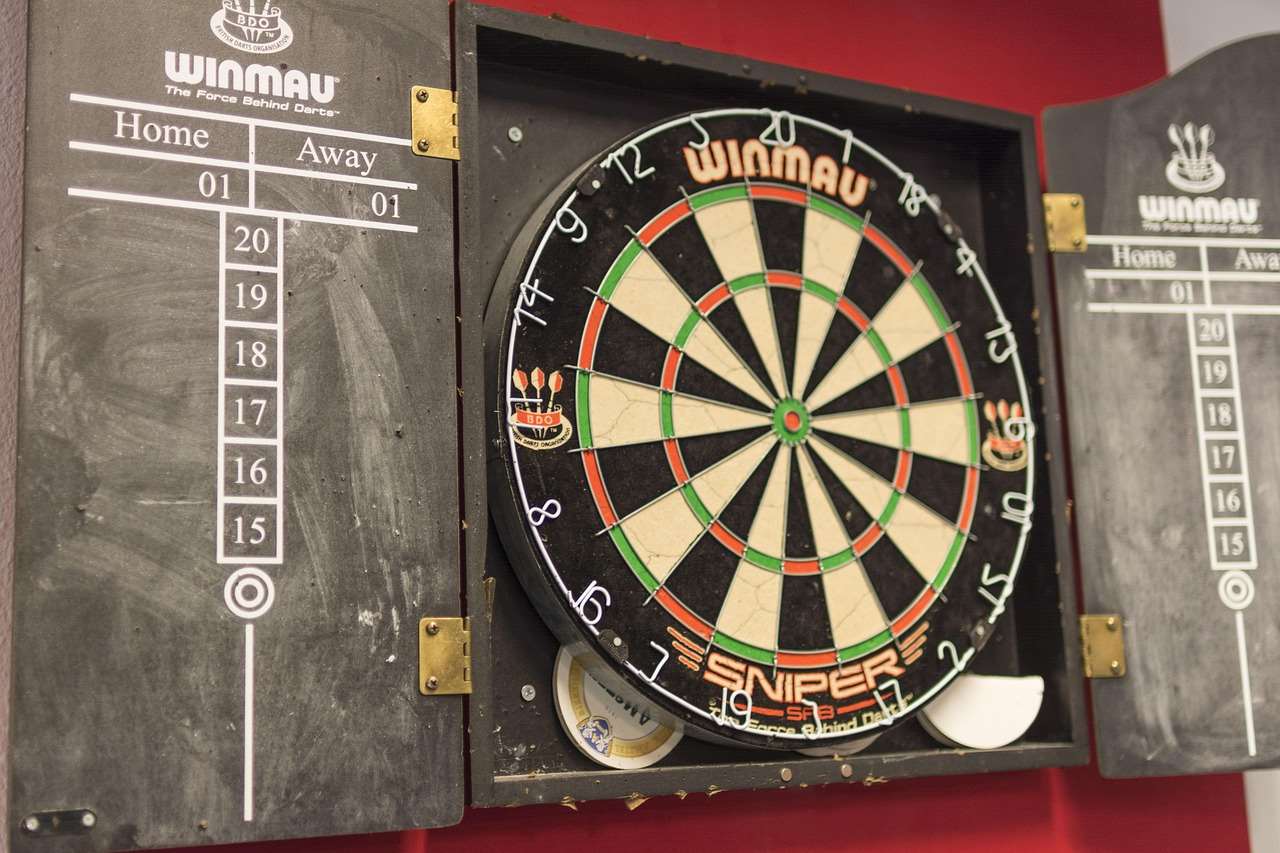The ideal **darts players weight of darts** is highly subjective, typically ranging from 21 to 26 grams, but the *right* weight is the one that feels most comfortable and allows for consistent throws. This article explores how to determine the best dart weight for your individual throwing style and skill level, covering the influence of factors like barrel material, grip, and personal preference.
⚠️ Still Using Pen & Paper (or a Chalkboard)?! ⚠️
Step into the future! The Dart Counter App handles all the scoring, suggests checkouts, and tracks your stats automatically. It's easier than you think!
Try the Smart Dart Counter App FREE!Ready for an upgrade? Click above!
Understanding the Importance of Darts Weight
Choosing the correct weight for your darts is crucial for achieving accuracy and consistency in your game. A dart that’s too light might feel unstable, susceptible to air currents, and require excessive force to throw, while a dart that’s too heavy can lead to fatigue and a lack of control. Finding the sweet spot, where the dart feels balanced and responsive in your hand, is the key to improving your scores and enjoying the game. Think about how much control you have over the dart, is the dart doing what you expect it to do?

How Weight Impacts Trajectory
The weight of a dart directly influences its trajectory through the air. Heavier darts tend to fly straighter and are less affected by minor inconsistencies in your release. Lighter darts, on the other hand, can be more susceptible to wavering, but they can also be easier to throw with a faster, more fluid motion. Understanding this relationship is vital to finding the best **darts players weight of darts** for your game. You can read more about different throws here.
Common Dart Weights and Their Suitability
While personal preference reigns supreme, certain dart weights are more commonly favored by different types of players. Here’s a breakdown of typical weight ranges and the kinds of dart players who often gravitate toward them:
- 21-23 grams: Often preferred by beginners and those who favor a lighter, faster throw. These are often considered to be lighter **steel tip darts**.
- 23-25 grams: A popular all-around weight range, suitable for a wide variety of throwing styles. Many experienced players find this range provides a good balance of control and stability.
- 25-26 grams: Favoured by players with a stronger, more deliberate throwing motion. The heavier weight can provide increased stability and reduce the impact of minor flaws in their technique.
- 26+ grams: Less common but can be beneficial for players who want maximum stability and prefer a very direct, powerful throw. You would typically find these in soft tip darts, but some steel tip variations do exist
Experimenting with different weights within these ranges is crucial to finding what feels most natural to you.
Factors Influencing Your Dart Weight Choice
Several factors besides your general throwing style should influence your selection of **darts players weight of darts**. These include:
Your Grip
How you grip the dart has a significant impact on the ideal weight. If you grip the dart tightly, a slightly heavier dart might provide more stability. If you have a looser grip, a lighter dart might offer better control and finesse. A strong grip is sometimes used to correct faults in the throw, this is counterproductive. A good technique will allow for a much smoother experience.
Your Throwing Style
As mentioned earlier, your throwing style is a major determinant. Do you have a fast, whippy throw or a slower, more controlled release? Faster throwers often prefer lighter darts, while those with a more deliberate motion might benefit from a heavier weight. Consider the pendulum swing, this will give you the most accurate throw. Remember to follow through, this will ensure the dart is going in the correct direction.
Barrel Material and Design
The material and design of the dart barrel also play a role. Tungsten barrels, for example, are denser than brass barrels, allowing for a slimmer profile at the same weight. A slimmer barrel can improve grouping on the dartboard, allowing you to cluster your darts more closely. Barrel design can change the weight distribution of the dart, affecting the dart’s feel in the hand. A dart shop can help you select the right barrel. You can check out this one!

Experimentation: The Key to Finding Your Perfect Weight
There’s no magic formula for determining the best **darts players weight of darts**. The most effective approach is to experiment with different weights and see what feels best for you. Visit your local darts shop or purchase a set of darts with interchangeable weights. Throwing consistently is key to a better game. Check out the Darts scoreboard app to track your performance.
- Try different weights in practice sessions. Dedicate specific sessions to testing various weights, focusing on consistency and accuracy.
- Pay attention to how the dart feels in your hand. Does it feel balanced and comfortable? Are you able to release it smoothly and consistently?
- Track your scores and analyze your results. Use a dart scoreboard app to monitor your progress and identify which weight consistently produces the best results.
The Psychology of Dart Weight
Don’t underestimate the psychological aspect of dart weight. If you believe a certain weight will improve your game, that belief can often translate into better performance. Confidence is a key factor in darts, and feeling comfortable with your equipment is a big part of building that confidence. Try using an **auto darts scorer** to monitor your performance.

Dealing with Dart Fatigue
If you’re experiencing fatigue or struggling to maintain consistency during long practice sessions or matches, consider experimenting with a lighter dart. A lighter dart might require less effort to throw, reducing fatigue and improving your endurance. This is all about finding the sweet spot for you and your style.
Steel Tip vs. Soft Tip Darts: Weight Considerations
While the general principles of dart weight apply to both steel tip and soft tip darts, there are some important differences to consider.
- Steel Tip Darts: Typically heavier, ranging from 20 to 30 grams. The weight is needed to penetrate the sisal fibers of a traditional dartboard.
- Soft Tip Darts: Generally lighter, usually between 16 and 20 grams (including the tip). This is because the plastic tips are designed to stick to the electronic dartboard without damaging it. If you are playing soft tip darts, you should be using the appropriate **dart flight punch tools**.
Always ensure you’re using the appropriate darts for the type of dartboard you’re playing on.

Advanced Considerations for Choosing Dart Weight
Once you’ve established a baseline understanding of dart weight, you can start exploring more advanced concepts to further refine your selection.
Weight Distribution: Front-Weighted, Center-Weighted, and Rear-Weighted Darts
The distribution of weight within the dart can significantly affect its flight characteristics. Front-weighted darts tend to fly straighter and are often preferred by players who want a more direct, stable trajectory. Center-weighted darts offer a balanced feel and are suitable for a variety of throwing styles. Rear-weighted darts can be more forgiving of minor release errors and are sometimes favored by players who struggle with consistency. The choice is yours based on what you find comfortable.
Experimenting with Dart Setups
Don’t be afraid to experiment with different dart setups, including different shafts and flights. Shorter shafts can make the dart feel more stable, while longer shafts can increase the dart’s spin and stability. Different flight shapes and sizes can also influence the dart’s trajectory and stability. You can purchase a wide array of **dart point** styles and varieties for your set.

Adjusting Your Technique Based on Dart Weight
Once you’ve chosen a dart weight, you may need to make minor adjustments to your throwing technique to optimize your performance. If you switch to a heavier dart, you might need to use a bit more force in your throw. If you switch to a lighter dart, you might need to focus on maintaining a smooth, controlled release. The key is to adapt your technique to the specific characteristics of the dart you’re using. If you get frustrated with your **darts counter set up**, remember that darts is a game for everyone to enjoy.
Conclusion: Finding Your Perfect Darts Players Weight of Darts
Ultimately, determining the best **darts players weight of darts** is a journey of experimentation and self-discovery. Consider your grip, throwing style, and the type of dartboard you play on, and don’t be afraid to try different weights until you find what feels most comfortable and allows you to throw consistently. Remember to practice regularly and track your progress, and you’ll be well on your way to improving your game. Now, go out there and experiment with different weights to discover what works best for you and take your game to the next level!
Hi, I’m Dieter, and I created Dartcounter (Dartcounterapp.com). My motivation wasn’t being a darts expert – quite the opposite! When I first started playing, I loved the game but found keeping accurate scores and tracking stats difficult and distracting.
I figured I couldn’t be the only one struggling with this. So, I decided to build a solution: an easy-to-use application that everyone, no matter their experience level, could use to manage scoring effortlessly.
My goal for Dartcounter was simple: let the app handle the numbers – the scoring, the averages, the stats, even checkout suggestions – so players could focus purely on their throw and enjoying the game. It began as a way to solve my own beginner’s problem, and I’m thrilled it has grown into a helpful tool for the wider darts community.